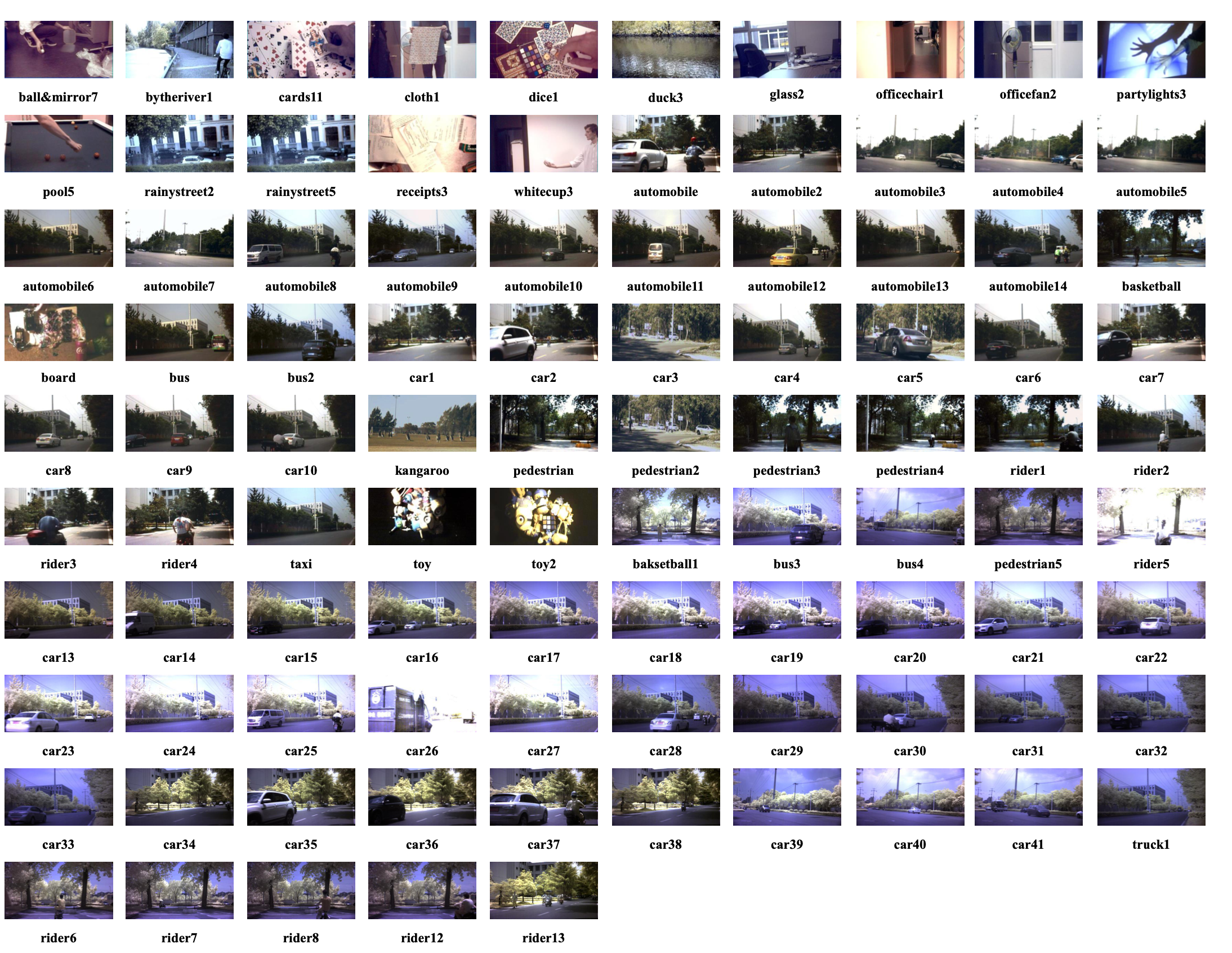The dataset used in this contest was acquired using three XIMEA snapshot cameras including VIS, NIR and RedNIR, which respectively covers 16 bands, 25 bands and 15 bands after calibration. The videos were captured at 25 frames per second (FPS). Each frame was originally captured in 2D and arranged in a mosaic mode. Each frame is then converted to 3D with the first two dimensions index the location of each pixel, and the third dimension indexes the band number (code provided). For the RedNIR data, please drop out the last band which contains only zero values. False-color videos generated from the hyperspectral videos are also provided. The first frames of some videos are as follows:
Dataset and Source Code Links
Dataset Link: the dataset can be accessed via Dropbox or Google Drive or IMEC Server or Baidu YunPan Access code: 4u60
Evaluation code: Evaluation.zip
2D image to hyperspectral cube conversion code: X2Cube.zip
Python code for X2Cube and Evaluation HyperTools.py
Preprocessing
Camera Calibration
The camera calibration process involves two steps: dark calibration and spectral correction. Dark calibration aims to remove the influence of noise produced by the camera sensor. It is done by subtracting a dark frame from the captured image, for which the dark frame was captured with lens covered by a cap. The goal of spectral calibration is to reduce the distortion of spectral responses. It is done by applying a sensor-specific spectral correction matrix on the measurement in each pixel. The 16 band images of the corrected hyperspectral data cube are saved as 2D frames with the 16/25/15 bands arranged again in a mosaic mode.
Image Conversion
To ensure fair comparison, the hyperspectral videos were converted to false-color videos using CIE color matching functions. This produces strictly spatially aligned hyperspectral and false-color videos.
It is important to note that the spectral reflectance of an object may not necessarily match its actual physical reflectance due to the absence of certain calibration procedures, such as white calibration. However, despite this limitation, the spectral differences between different objects still play a significant role in improving recognition performance.
For details on the above steps, please refer to: F. Xiong, J. Zhou, and Y. Qian. "Material based object tracking in hyperspectral videos", IEEE Trans. Image Process., vol. 29, no. 1, pp. 3719-3733, 2020.
Annotation
A single upright bounding box is provided for the location of the target object in each frame. The bounding box is represented by the centre location and its height and width. The labels for hyperspectral and color videos were generated independently. The labels for the hyperspectral videos can be used directly on the false-color videos.
Attributes
The whole dataset contains 182 sets of videos for training and 89 sets of videos for validation. Every video is labelled with associated challenging factors out of eleven attributes, including illumination variation, scale variation, occlusion, deformation, motion blur, fast motion, in-plane rotation, out-of-plane rotation, out-of-view , background clutters, and low resolution.
Protocols:
- The use of the training set is optional.
- Tracking starts from the first frame of the sequence. The bounding box in the first frame are used to initialize the location of tracking. Single object tracking is expected.
- The same model hyper-parameters shall be used for all the sequences.
- The tracking results contain a sequence of bounding boxes for each frame.
- It is suggested to use a single model to handle HSVs with different numbers of bands.
Evaluation Metrics
Precision plot, success plot and area under curve (AUC) will be used to calculate the performance of all the trackers. Precision plot records the fractions of frames whose estimated location is within a given distance threshold to the ground truth. The average distance precision rate is reported at a threshold of 20 pixels. Success plot shows the percentages of successful frames whose overlap ratio between the predicted bounding box and ground-truth is larger than a certain threshold varied from 0 to 1. AUC will be caluclated on each success plot. All the results are presented with one-pass evaluation (OPE), i.e., a tracker is run throughout a test sequence with initialization from the ground truth position in the initial frame. Related codes are provided in the source code package.
Technical Support:
Fengchao Xiong
School of Computer Science and Engineering, Nanjing University Science and Technology
Email: fcxiong@njust.edu.cn
